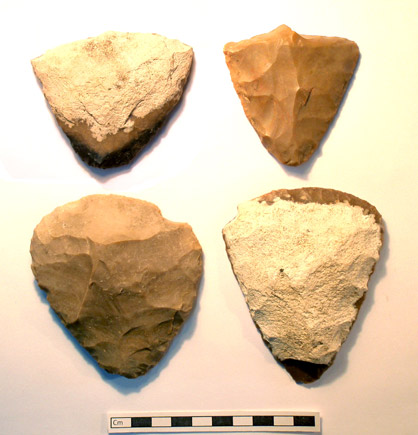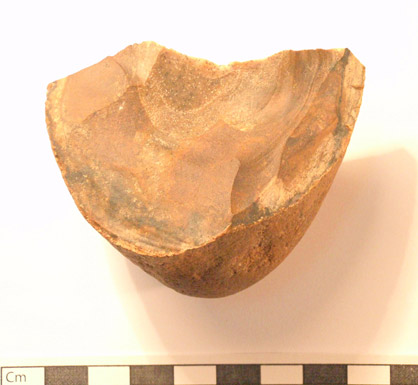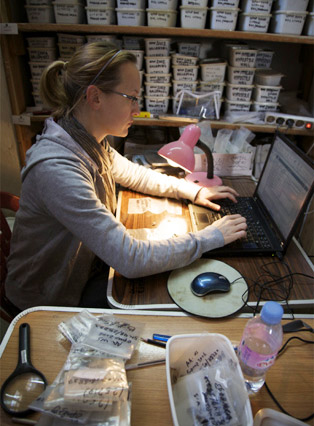Posted by Sabine Boos
As everybody knows, people in ancient Egypt used stone to build their monuments and statues. What is much less known, however, is that a large number of their tools were made of stone and this holds true for the Predynastic period as well as for a major part of Pharaonic times. Chert, sometimes referred to as flint, was the preferred stone for making their tools. Nodules of chert can be found almost everywhere in Egypt’s deserts and because of its good quality with robust, sharp edges people chose chert as raw material to produce many types of tools.

Photo 1: Scrapers from Worker's town (Photo by Sabine Boos)
Most people associate stone tools with the Paleolithic period (the Old Stone Age) and thus with a time, when people have generally been thought to be more “primitive”. A term that we wouldn’t want to use to refer to the advanced civilization of the pyramid builders. Nevertheless, the inhabitants of the Lost City of the Pyramids preferred tools made of chert for a wide variety of purposes. Many of these tools are quite similar to those Homo erectus used 2 million years earlier.

Photo 2: Simple core from Worker's town, in no way different to the so called Chopping Tools of Homo erectus (photo by Sabine Boos)
I have studied Egyptology and prehistory and see a great chance to combine my two main fields of research by looking at the lithic industry of Giza with the background of prehistoric technologies as well as in the Egyptological cultural context.

Photo 3: Sabine working on her database (Photo by Hilary McDonald)
In my first week at the lab in Giza, I started developing a database suitable for the purpose of managing the huge amount of stone tool data from the Workers’ Town. Before me, various people have done substantial analyses of parts of the lithic assemblage and they really did a great job. So I hope that I will follow their footsteps and do as well as they did! I’m also looking forward to the following weeks (and hopefully years) as part of this wonderful team. So thanks to Mark Lehner for giving me the chance to work here and Mary Anne Murray for her patient support when I always come up with more and more questions…
